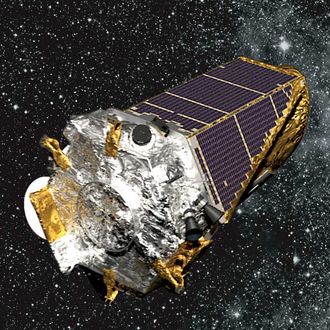
Planet Earth probably feels a little less special after NASA announced Wednesday that the Kepler space telescope has detected a slew of new planets — 1,284, to be exact. It’s the largest number the Kepler telescope, whose main gig is to orbit and detect new planets, has ever found. And as a NASA scientist put it: “This gives us hope that somewhere out there, around a star much like ours, we can eventually discover another Earth.”
At least nine of those newly discovered planets are in a sweet spot much like Earth — each orbits close enough to a star to possibly have liquid water, but is not so close that it’s a scorching wasteland. This brings the total of potentially Earth-like planets known to NASA up to 21 and, in a big win for the Clinton campaign, at least increases the possibility that we are not alone.
Kepler picks out planets by sensing when a star dims in brightness, says NASA, which tends to happen when a planet orbits past. (As with Mercury passing across the sun Monday.) Scientists also have a new analytical method that helps them sort through Kepler’s vast data to more easily know what’s likely a real planet and what’s just some random space matter. If you are well versed in astrophysics, you can read about the method here while the rest of us just put on our tinfoil hats and wait.





























